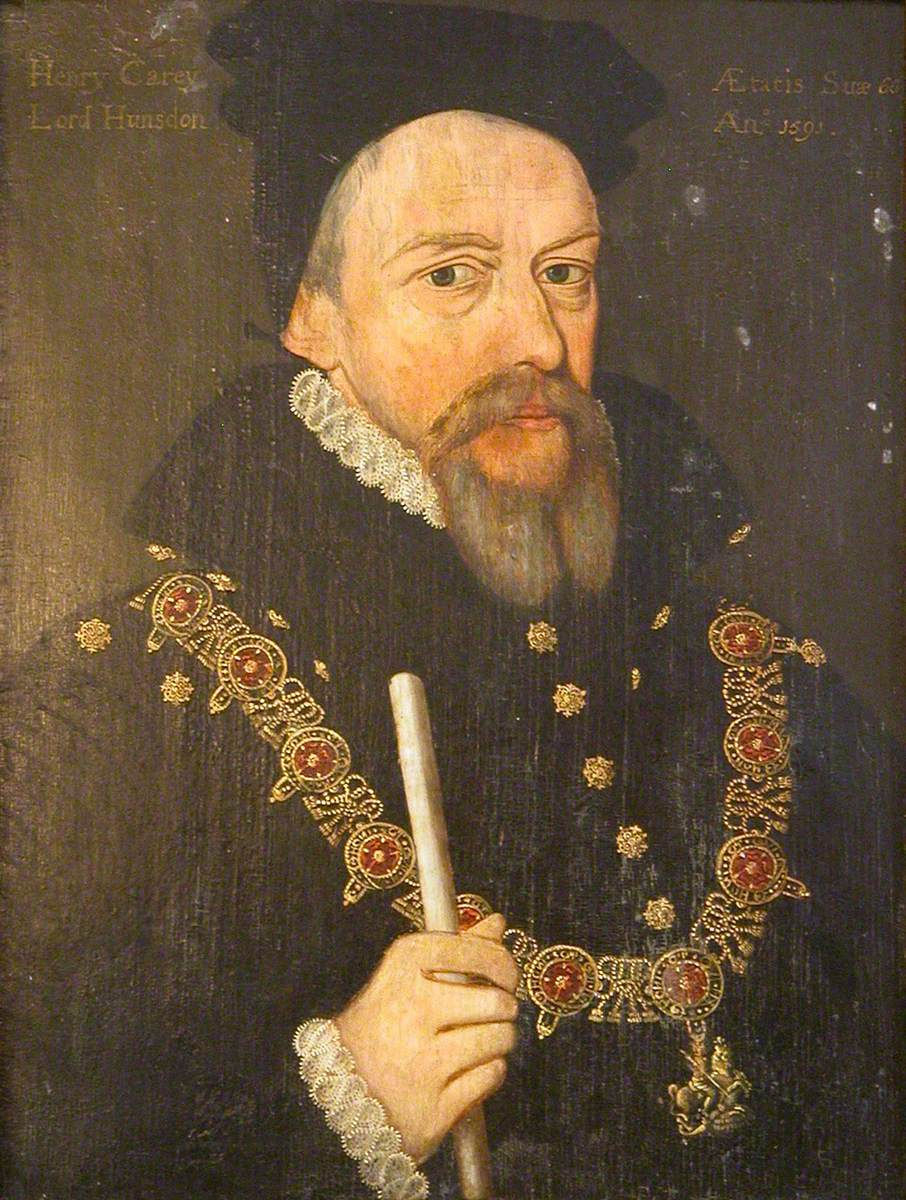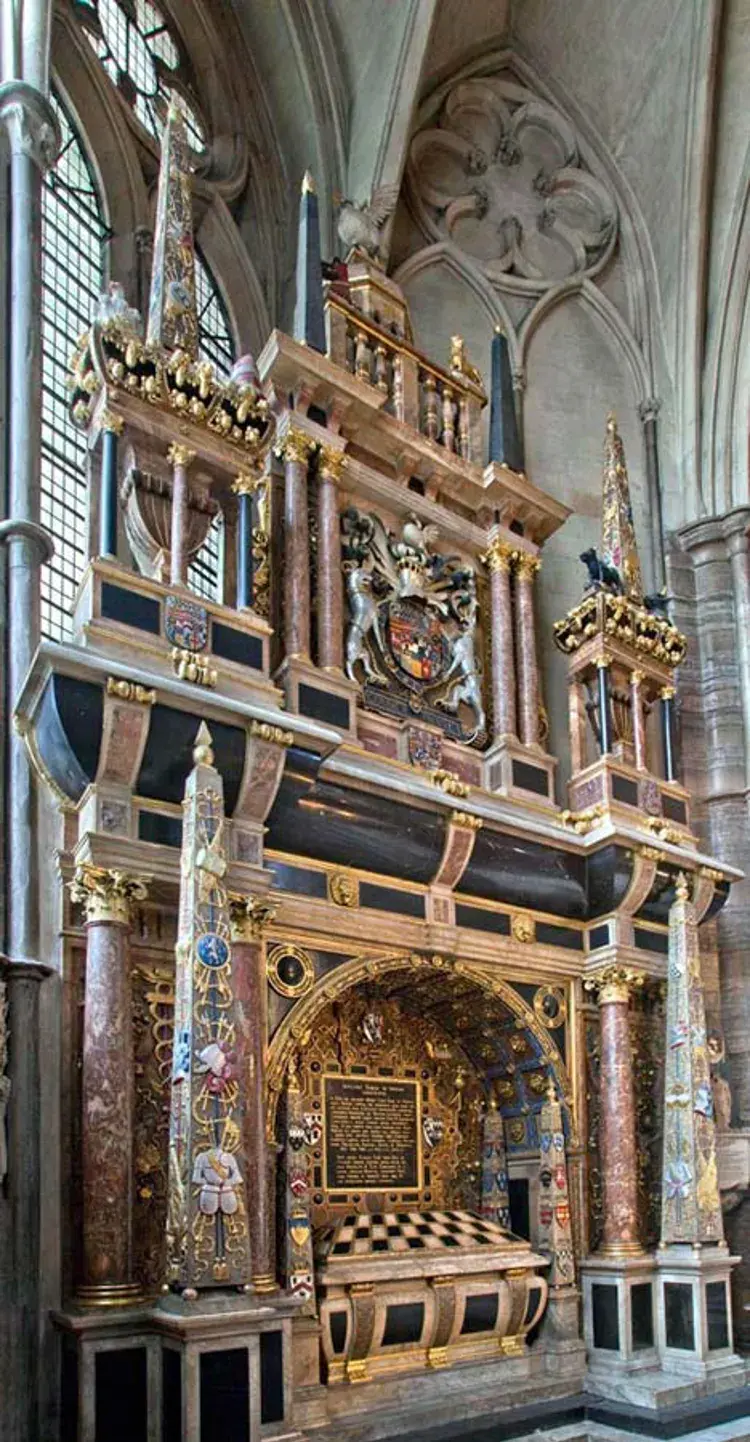The Death and Burial of Henry Carey, 1st Baron Hunsdon, 1596
- thedudleywomen
- Jul 30
- 9 min read
Updated: Sep 13

Henry Carey was the second child of Mary Boleyn, the eldest daughter of Thomas Boleyn, born in March 1526. Mary was then the wife of William Carey, a member of Henry VIII's household, and the known mistress of the king since Spring 1522. Whilst questions continue to be asked regarding the paternity of her first child, daughter Catherine, born in 1524, it has generally been accepted that Henry was the legitimate son of William and Mary, with Mary's affair with Henry coming to an end with the king's pursuit of her younger sister Anne. Following William's sudden death in 1528 from sweating sickness, the wardship of the young Henry was granted to his aunt, who took on the responsibility of his upbringing and education (Weir, 2011; Norton, 2013). Following Anne's downfall and execution in 1536, the wardship of Henry reverted to the Crown; along with other young royal wards, the now 10-year-old Henry was sent to Woburn Abbey, in Bedfordshire to continue his education. The abbey was dissolved two years later, as part of the Dissolution of the Monasteries, and was granted to Sir John Russell, Baron Russell, newly appointed Privy Councillor, to whom Henry's guardianship was allegedly granted. By 1545, Henry had entered the household of the aging king, with a marriage with Anne Morgan, the daughter of a Welsh gentleman arranged. (Weir, 2011) argues that Henry's new wife's social standing supports the argument that he was the legitimate son of William Carey, and not Henry VIII, comparing the marriage of the king's acknowledged illegitimate son Henry Fitzroy, Duke of Richmond and Somerset, and his choice of bride: Mary Howard, daughter of Thomas Howard, 3rd Duke of Norfolk and Lord High Treasurer. The young couple married on 21 May 1545, with twelve children being born from this union, which lasted for over fifty years, despite multiple infidelities on his side. Two of Hunsdon's daughters, Katherine 'Kate', Countess of Nottingham, and Philadelphia, Lady Scrope, would also join the queen's household, later becoming some of Elizabeth's closest confidants, as Ladies of the Bedchamber (Weir, 2011; Guy, 2016).

Following Henry VIII's death, Henry Carey first came to prominence in 1547, being elected as a Member of Parliament for Buckingham, with the new king Edward VI granting him lands and property in the county (Stephen, 1887). He also appears to have joined Elizabeth's service in some capacity, with household accounts confirming payments to him. Once Elizabeth succeeded to the throne in November 1558, significant changes were made to her privy council and household, with the new queen surrounding herself with old allies and those sympathetic to her cause. Of these new appointments, many were female Boleyn relatives, including her cousin Catherine Carey, Lady Knollys and Anne Morgan, Lady Carey, both of whom were appointed as Ladies of the Bedchamber (Weir, 1999; Norton, 2013, Folgerpedia [1], 2025). Henry, whom Elizabeth referred to as "My Harry", was quickly appointed to the peerage, being knighted and then created 1st Baron Hunsdon (also known as 'Lord Hunsdon') on 13 January 1559, only two days before Elizabeth's coronation. He was later granted the manors of Hunsdon and Eastwick in Hertfordshire, along with additional lands in Kent. These properties, along with further lands and properties in Yorkshire and Derbyshire, generated Hunsdon a generous income in excess of £4,000 per annum. In 1561, he was further elevated, being installed as a Knight of the Order of the Garter, a distinguished and selected position, as well as being appointed to the Privy Council. Over the years, Hunsdon received multiple appointments, in which he excelled, including Captain of the Gentleman Pensioners and Governor of Berwick, as well as being selected as a commissioner for multiple trials held over his cousin's reign, including that of Mary, Queen of Scots (Stephen, 1887; Guy, 2016; Targoff, 2024; Folgerpedia [1], 2025).

Writing more than 60 years after his death, Fuller (1662, p.380) noted certain personality traits, describing Hunsdon to be "cholerick [quick-tempered, easy to anger] but not malicious", and that "his custome in Swearing, and obscenity in speech, made him seem a worse Christian than he was". However, despite his close kinship with the queen, Hunsdon reportedly did not rely solely on nepotistic opportunities, despite his multiple appointments over the years, but rather "hung at Court on no mans sleeve, but stood on his own Botome til the time of his death". His straight-talking and no-nonsence attitude meant that he kept himself away from the disputes and controversies that often divided the court, and was widely admired and respected by courtiers and councillors alike (Stephen, 1887).
It was said that Hunsdon suffered with ill-health for the last two years of his life, including pain and discomfort associated with arthritis. Despite this, he was able to retain his many appointments, including that of the Lord Chamberlain of the Royal Household - a senior role within the queen's household, being responsible for the organisation and wellbeing of clerical and medical staff, as well as for court entertainment. Hunsdon had been installed in this role in 1585, and it was through this that his interest in the theatre and arts grew. In 1594, he lent his patronage to a company of theatre players, known as 'The Lord Chamberlain's Men', comprised of members from other companies, including famous actor Richard Burbage, John Hemings and Henry Condell (who would later edit The First Folio) and actor and playwright William Shakespeare (Guy, 2016; Targoff, 2024).
Only a year previously, in 1593, a child was baptised, carrying the surname of Alphonso Lanier, a court flautist under the supervision of Hunsdon. The boy was however named for his father - Henry; his mother, Æmilia Bassano, daughter of a former court musician, had been the long-term mistress of "the old lord chamberlain", whom Æmilia later reported "kept her long" and "loved her well" (Targoff, 2024, p.84). The affair, which bridged the social divide and the generational gap, appears to have began when the orphaned Æmilia came to court c.1587, and lasted until her pregnancy, at which time Henry arranged her marriage to her kinsman Alphonso, this being a more suitable match, in both age and social status.

Despite his close kinship and unwavering loyalty to the queen, Hunsdon was not further elevated within the peerage during her reign. It was said that he petitioned on three separate occasions during his life in claiming the Earldom of Wiltshire; the title which had been bestowed on his maternal grandfather Thomas Boleyn in 1529. The earldom had since been issued by King Edward VI in 1550 to Sir William Paulet, as a reward in supporting the coup against Lord Protector Edward Seymour, 1st Duke of Somerset in October 1549, and had since been inherited by his grandson William Paulet, 3rd Marquess of Winchester (Tallis, 2017). (Fuller, 1662, p.381) alleges that when on his deathbed, his "loving kinswoman Elizabeth" paid Hunsdon a "gracious visit", ordering that patents should be drawn up confirming his elevation to the ever-allusive Earldom, and subsequently peerage robes were made. However, Hunsdon reportedly declined this offer, stating "seeing as you counted me not worthy of this honour whilst I was Living, I count myself unworthy of it now I am Dying".

In the evening of 21 July 1596, Hunsdon made an oral declaration, otherwise known as a nuncupative will, to his eldest son Sir George Carey, the details of which were later recorded. Whilst he reaffirmed his intent for George to be his legal heir, Hunsdon confirmed his current financial difficulties; he advised that whilst he had no wealth or assets for his family to directly inherit, he confirmed that Elizabeth had promised to "fully relieve his estate" on his death, settling any debts and ensuring these would pass to his family (The National Archives, 2025).
On 23 July 1596, Hunsdon died at Somerset Place, a mid-16th century palace, what was once the most 'modern' and 'striking' town located on The Strand, within the City of Westminster. Initially built by Somerset, it was confiscated by the Crown on his downfall and execution in 1552, and over the subsequent years was used by Elizabeth, including prior to her accession, during which time additional building works completed. In 1574, use of the property was granted to Hunsdon on a long-term basis, being appointed as Keeper of Somerset House, with the property becoming his primary residence whilst at court and additional renovations taking place. Around the time of Hunsdon's death, his widow Anne, Lady Hunsdon took over the role as the Keeper of Somerset Place, a position which she held until her own death in 1607, in addition to further payments granted to her by the queen, including an annuity of £200, which ensured that she remained financially secure throughout her lifetime (Thurley, 2019; Folgerpedia[1], 2025; Folgerpedia [2], 2025).

Hunsdon's death came only four days after the demise of his brother-in-law, Sir Francis Knollys, at his estate at Caversham, Berkshire. Knollys, who had held the position of Treasurer of the Royal Household since 1570, had also displayed a long-lasting and steadfast loyalty to Elizabeth throughout her reign, and the queen was said to have grieved his loss, as she did his wife Catherine Carey three decades earlier. Within a week, the aging queen had lost not only two of her closest relations, but also two of the highest-ranking members of her royal household (Tallis, 2017).



Comments